This is part 9 of a test of the Sony 12-24 mm f/4 FE lens. The test starts here.
I tested the Sony 12-24 mm f/4 FE lens for on-axis longitudinal chromatic aberration (LoCA) and focus shift. I used my computer controlled focusing rail and a low-contrast inkjet-printed slanted edge target.
A quick review of the test protocol:
- Sony a7RII
- ISO 100
- Manual exposure
- Wescott LED panels set to 5500 K.
- EFCS shutter mode
- Manual focus, set at one position in the center of the rail for f/4
- Cognisys computer-driven focusing rail
- 101 exposures 1.6 mm apart
- Target distance at the center of the rial, 0.5 m
- ARW mosaiced files extracted as TIFFs in dcraw (document mode)
- TIFFs cropped and raw channels selected in Matlab program
- MTF50 of cropped TIFFs measured with MTF Mapper
- Data assembled in Matlab
- Data plotted in Excel
A LoCA plot at 24 mm and f/4:
The vertical axis is MTF50, measured in cycles per picture height (cy/ph). The horizontal axis is camera position shift in cm. The points on the left side of the graph are with the camera farther away from the subject than the points on the right.
There is essentially zero LoCA: the peaks are at the same distance for all three channels. However, the unnatural (if you’re new to this presentation of LoCA, trust me; it is unusual) flatness of the top of the curve indicates that lens aberrations are limiting sharpness considerably at f/4 and this subject distance.
At the other three whole stops from f/4 to f/11:
The LoCA, or rather the lack of it, is impressive. There is quite a lot of focus shift, however. Plotting all the green channel results on one graph will give us an idea of how much:
You can see that there is so much focus shift that we may have missed the f/11 peak because we ran out of rail travel. Focus shifts further away as you stop down. You can also see that, at this distance and at 24 mm, you probably don’t want to use f/4.
Let’s look at the results at 18 mm:
That’s what the f/4 peaks should look like.

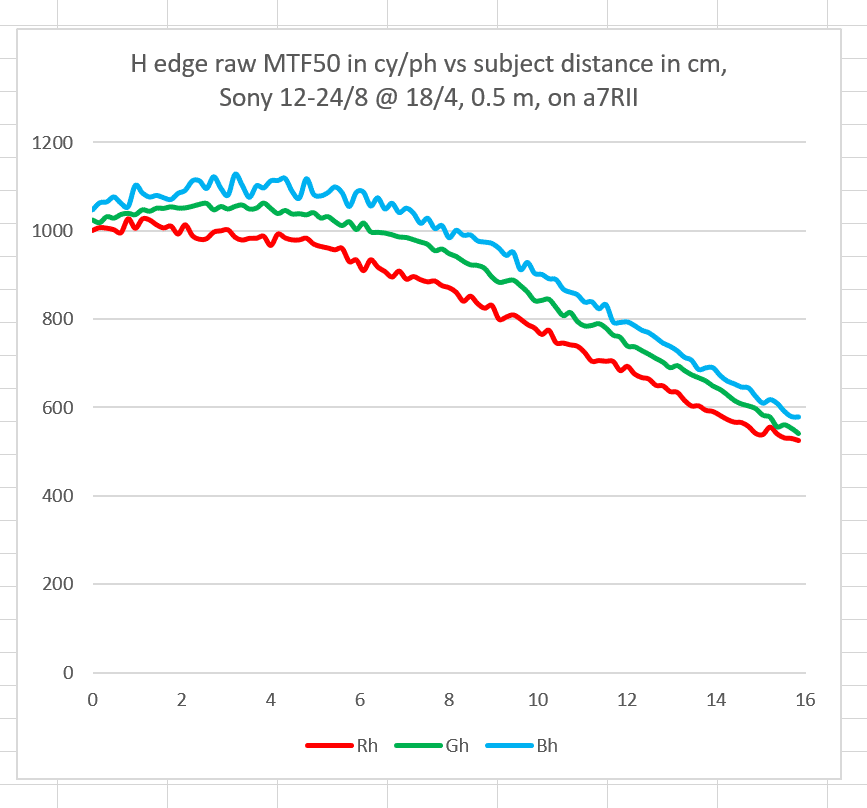
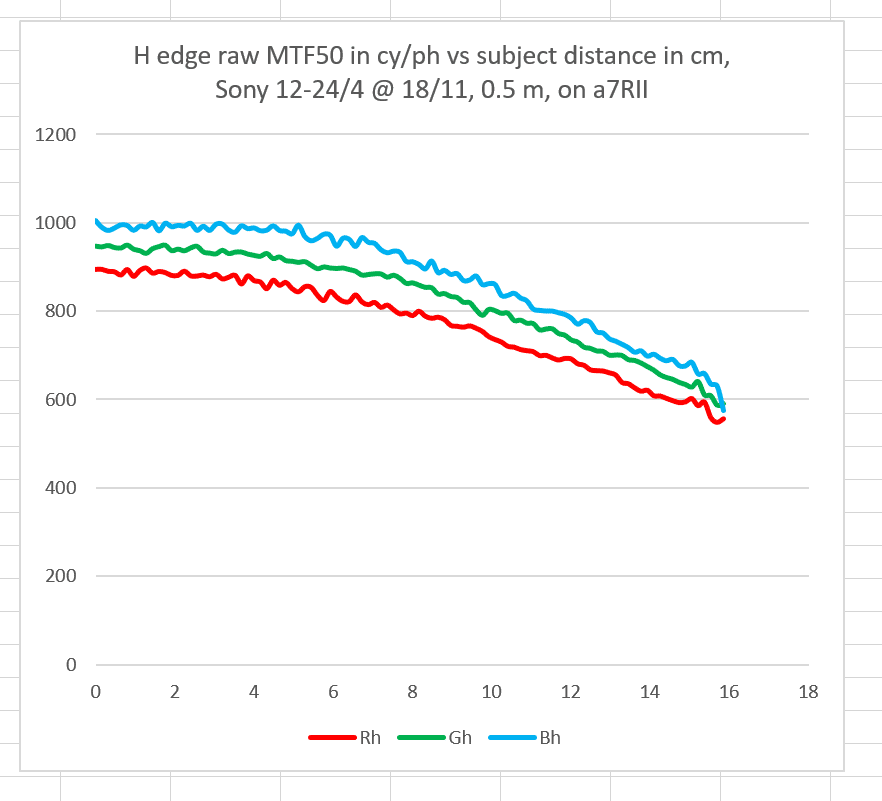
And all the green channels on one plot:
About the same amount of focus shift. At this focal length and subject distance, the lens is sharpest wide open, although there is little penalty in stopping down to f/8.
We have enough data in the charts above to say something about the lens’ parfocality — its ability to hold focus position as the focal length is changed. There is about 1 1 cm shift at f/4 away from the camera as the lens is zoomed from 24 mm to 18 mm.
This is pretty good performance, but the lens should be focused at the taking aperture at least as far as f/8 for best results.
It is an open question how much of the above applies to the lens when the subject distance is much greater. I have no way of testing that.
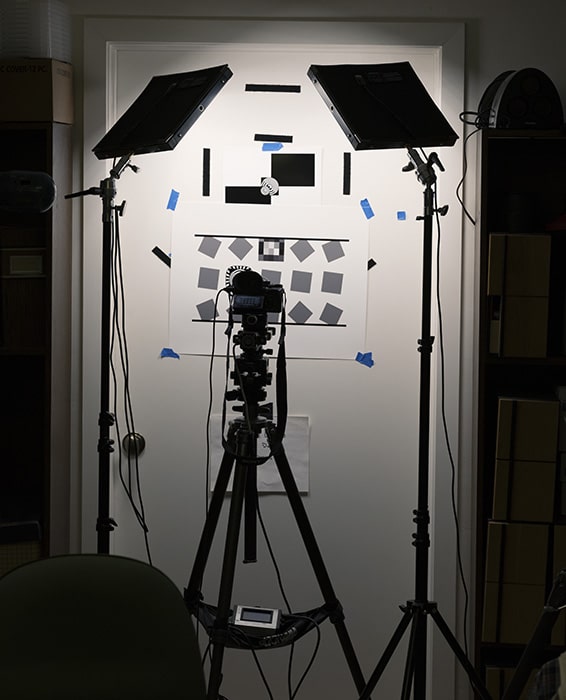
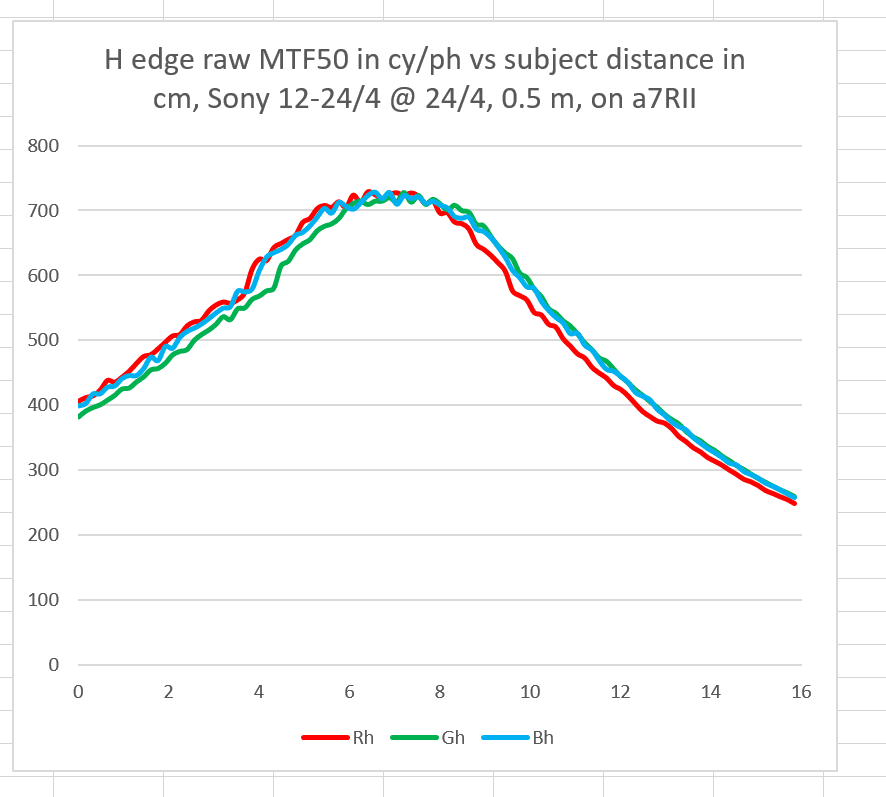
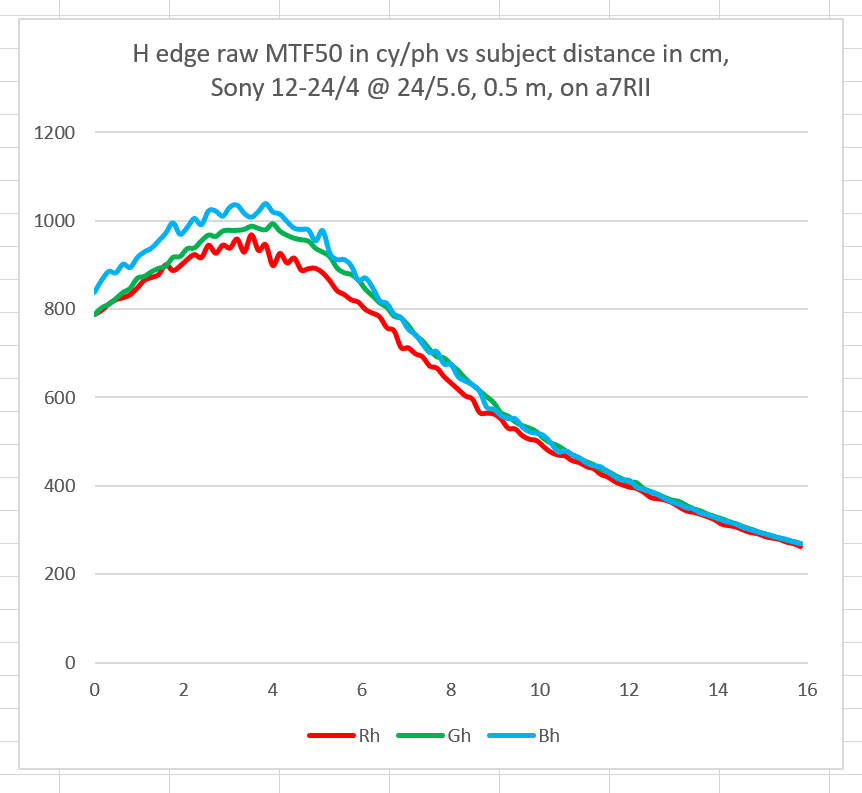

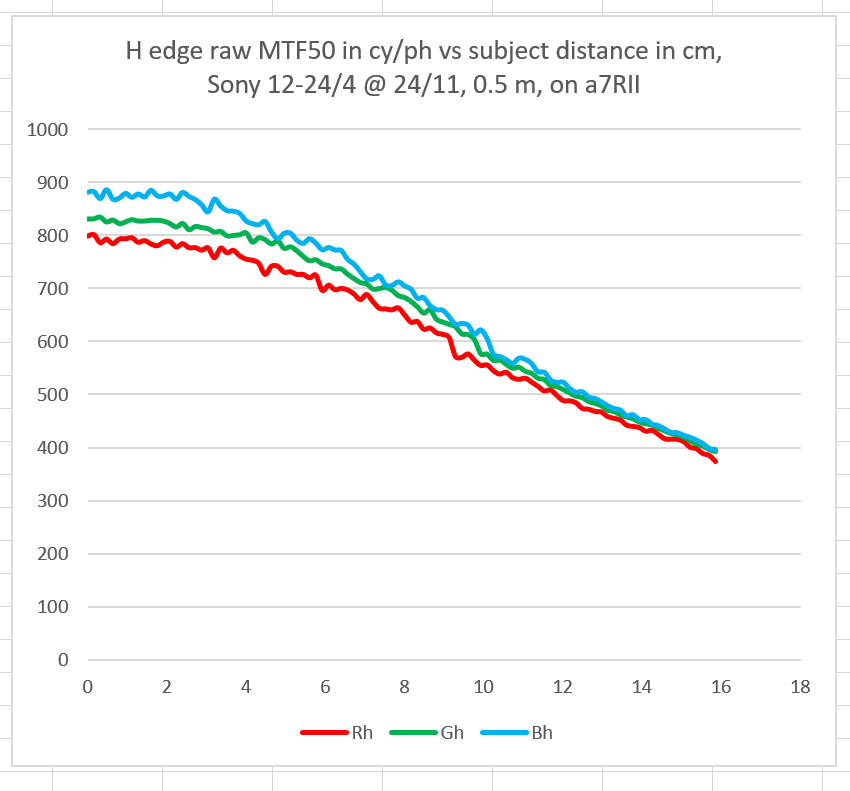
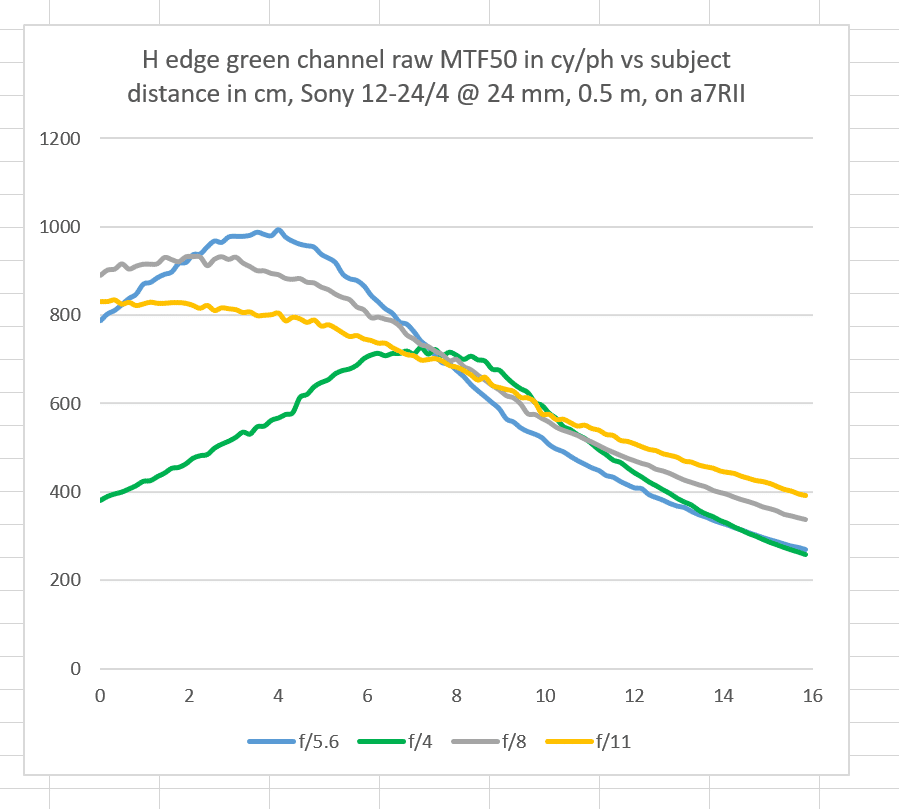
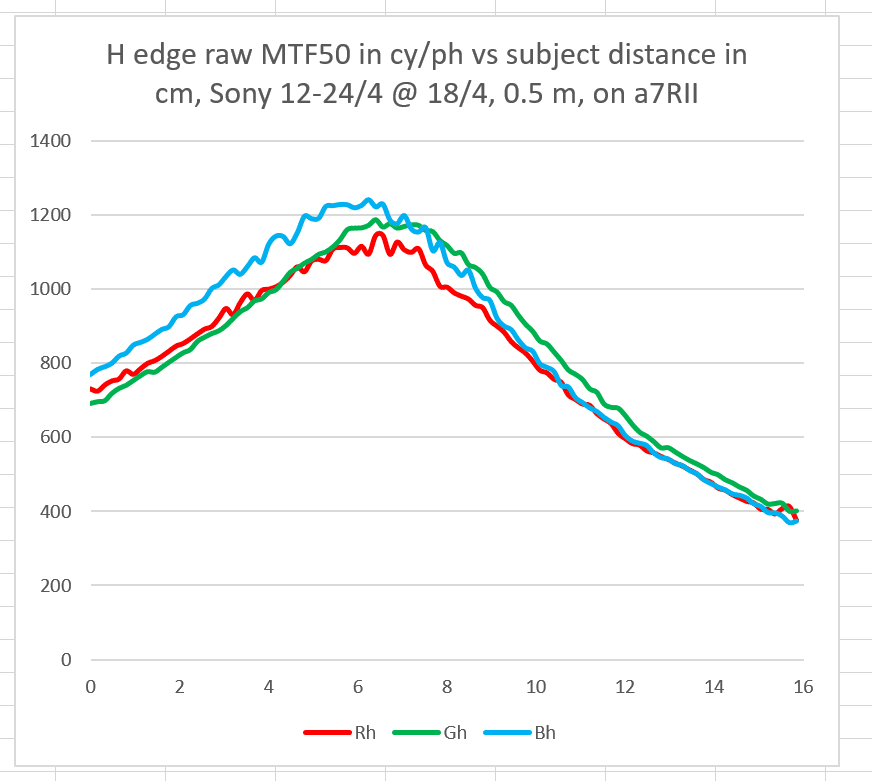
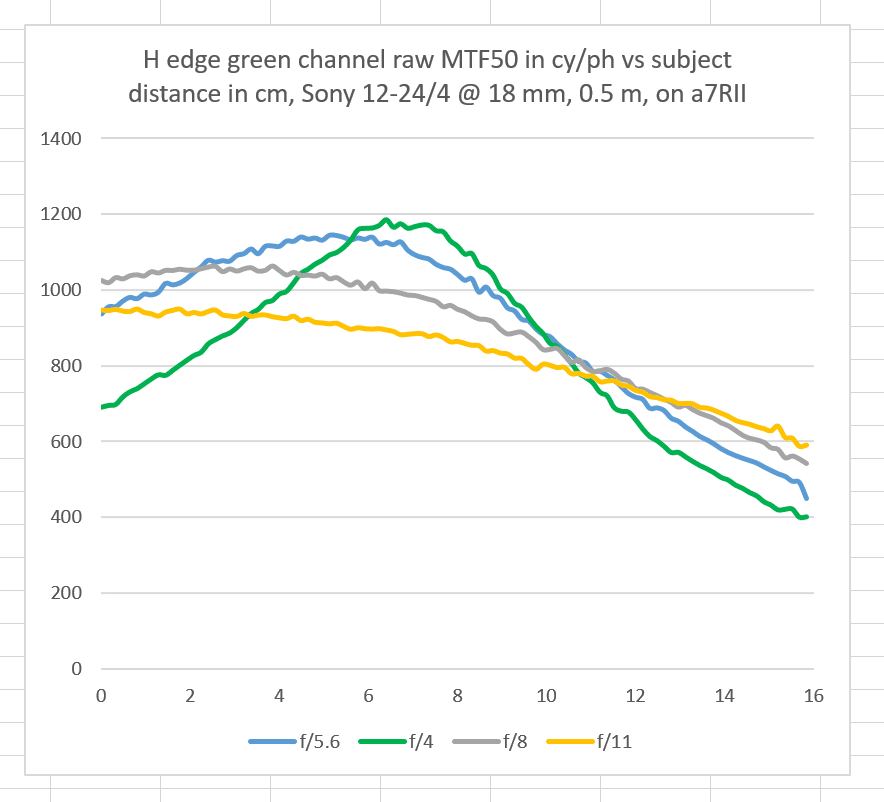
Leave a Reply